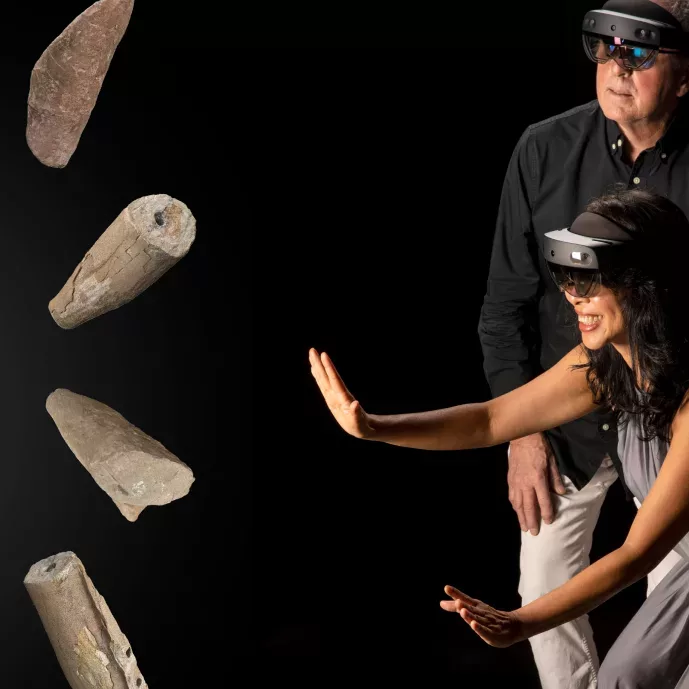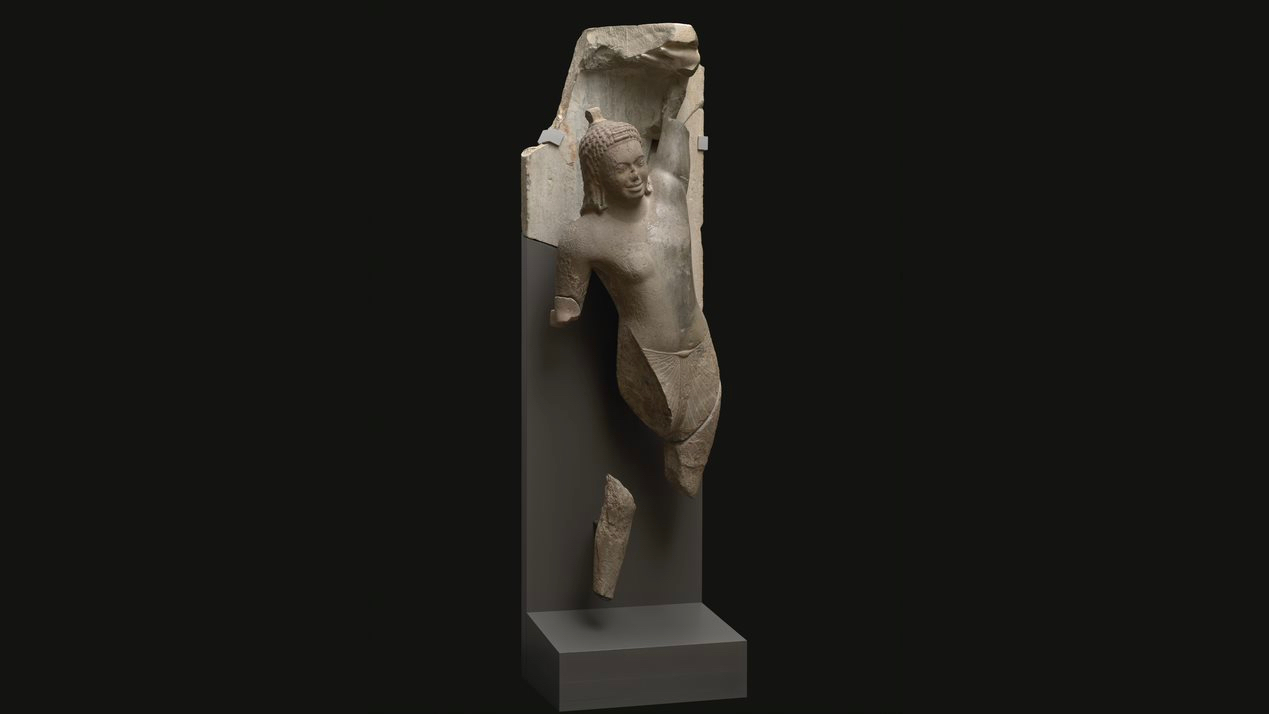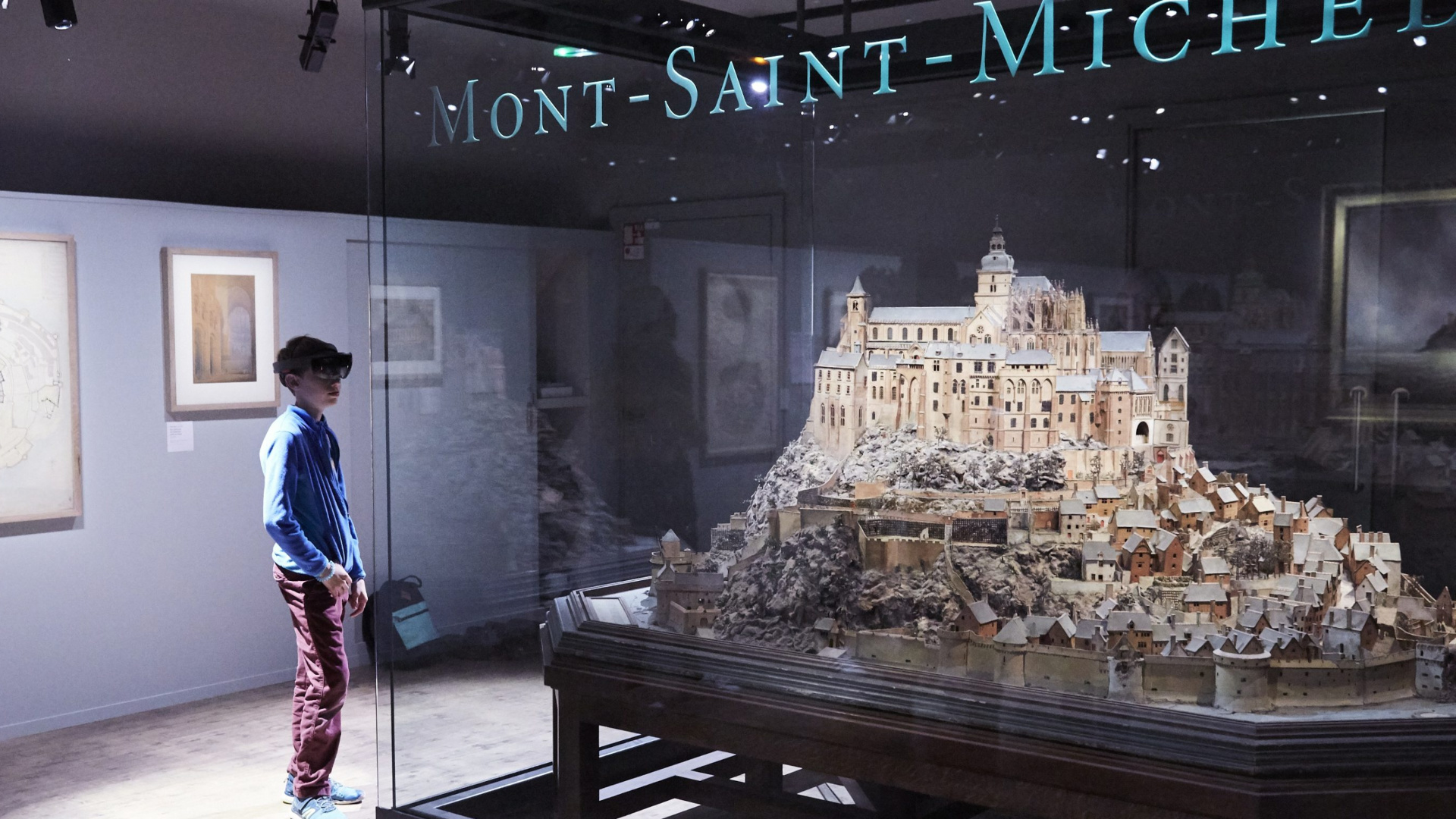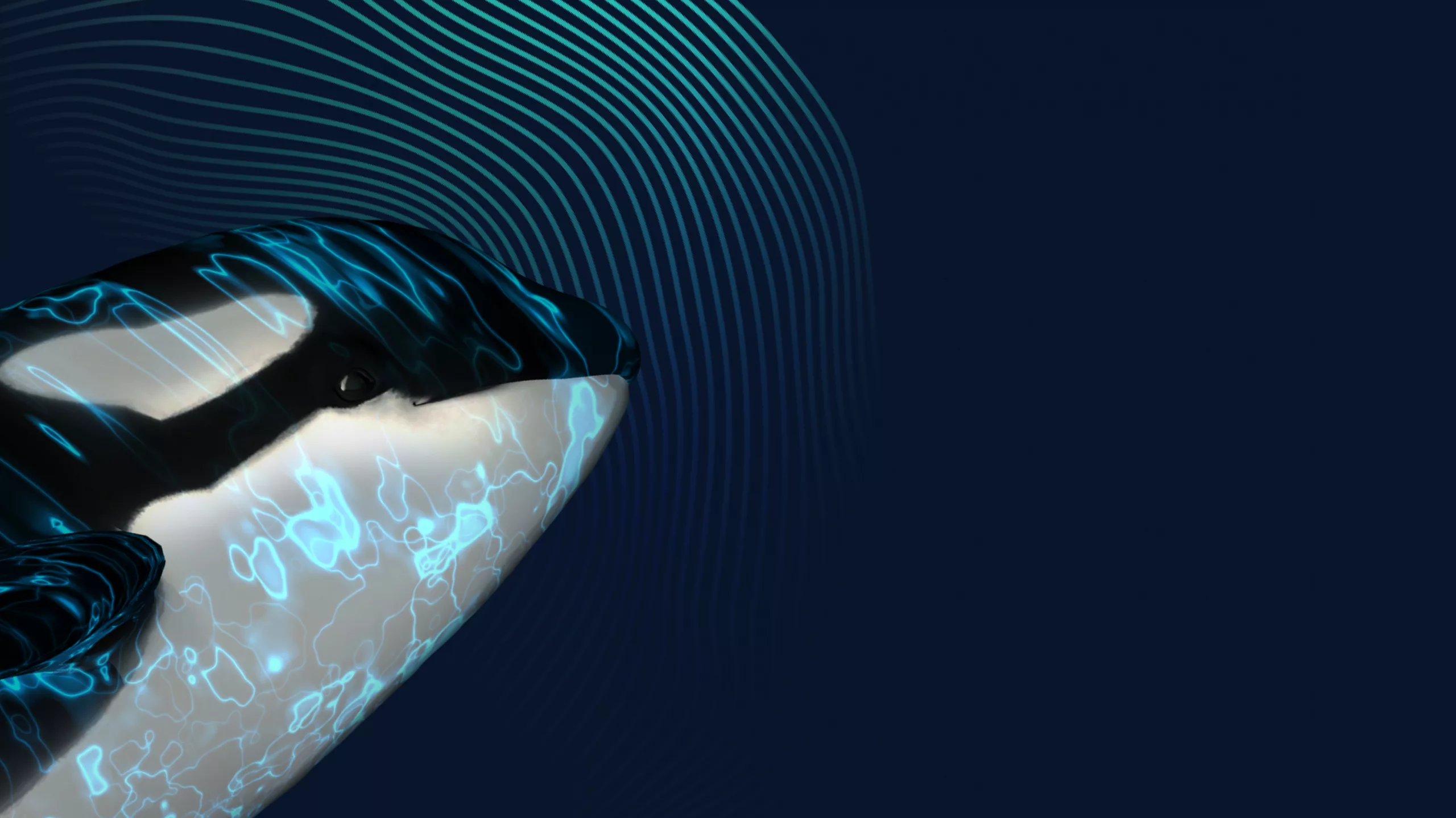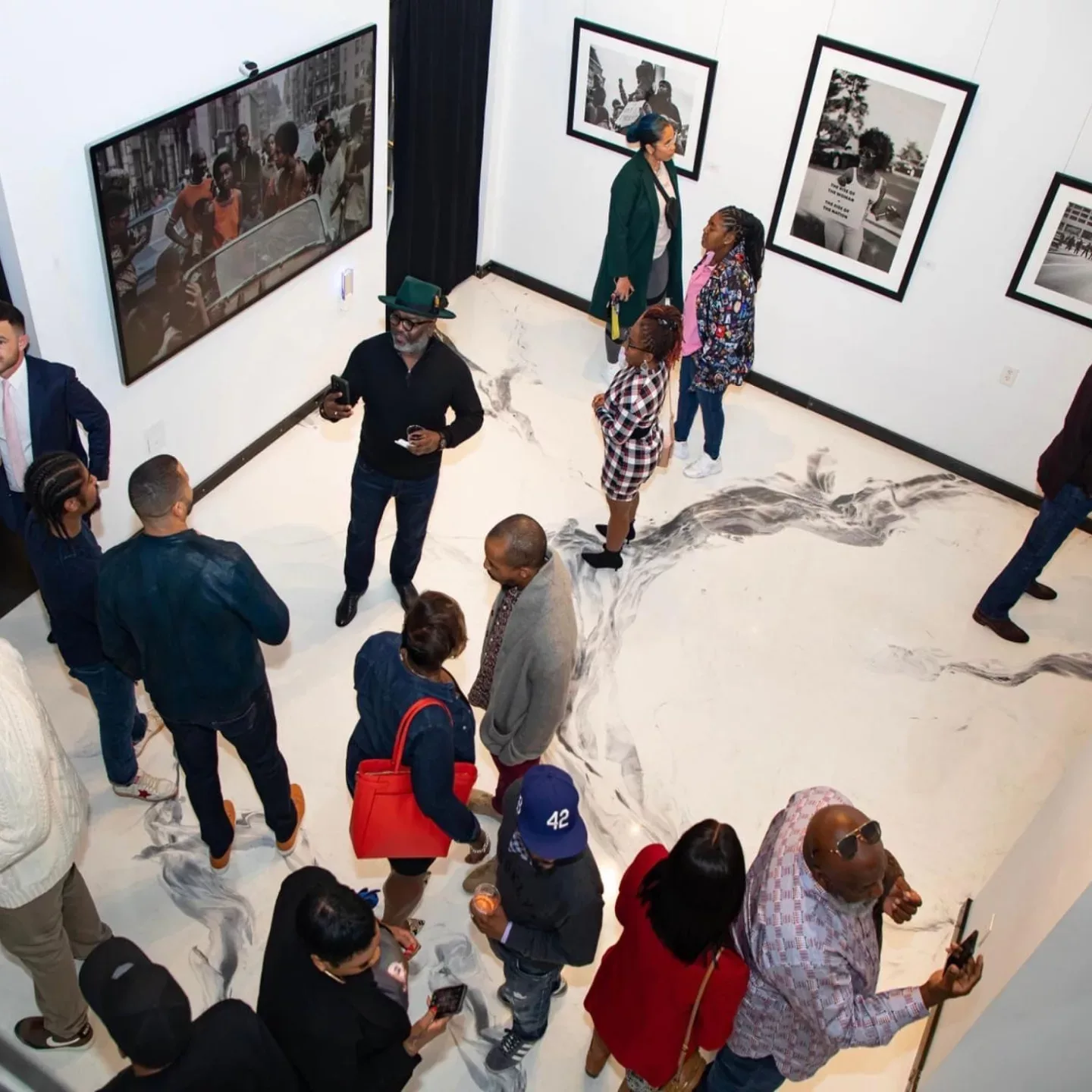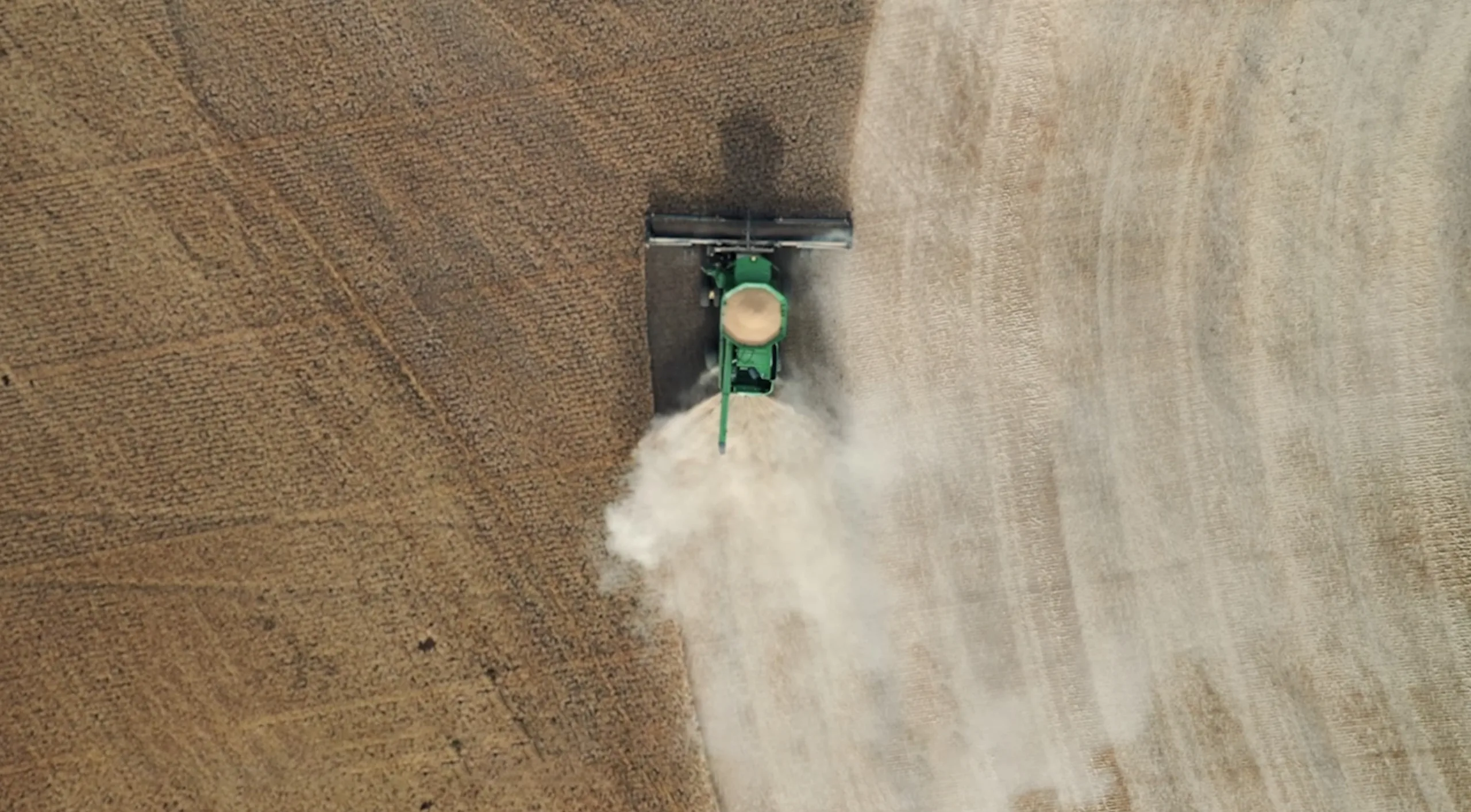Behind an ancient sculpture of the Hindu god Krishna lifting a mountain is a complex story of upheaval, loss, and change. An immersive exhibit from the Cleveland Museum of Art brought this story to life, offering a fresh look at the enduring tale of Krishna passed down over millennia.
The 1,500-year-old sandstone sculpture Krishna Lifting Mount Govardhan originally presided over a sacred cave in Phnom Da, Cambodia. It told part of the epic story of the Hindu god holding up the mountain to protect people from floods in the surrounding river delta.
Centuries of upheaval led to the statue repeatedly changing hands and relocating around the globe. Since the 1970s, the Krishna has resided in the Cleveland Museum of Art (CMA). Other antiquities from Phnom Da are found from Asia to Europe.
Now, for the first time in millennia, the story was retold in the CMA’s 2022 exhibition, Revealing Krishna: Journey to Cambodia’s Sacred Mountain. The exhibition featured an immersive, mixed reality tour that contextualizes the story of the sculpture on the Southern Cambodian floodplains and inside the mountain cave. It followed the Krishna’s journey to Brussels and on to Cleveland, showing how the sculpture itself changed over time.
A decade ago, Dr. Sonya Rhie Mace, CMA’s curator of Indian and Southeast Asian Art, and Cambodian museum officials saw the chance to bring Phnom Da’s story of Krishna Lifting Mount Govardhan back to life. They knew it would be no easy undertaking.
In order to understand the full story, museum visitors needed to learn the ecological context of the Cambodian river delta. They had to see the topography of the mountainside and the cave where the statue lived. They also needed to understand the wider story revealed through the other deities that once flanked the Krishna.
Most of the remaining statues were too fragile to travel between museums. Therefore, the challenge was to design an innovative format for the exhibition that recombines the disparate parts of the story through both physical and digital elements.
There are so many layers to explain and so many parts around the world that can’t be all in one place. The challenge was to show it all in a way that visitors can understand—and understand rapidly.
They teamed up with the National Museum of Cambodia in Phnom Penh and École Française D’Extrême-Orient (EFEO). CMA has a long history of digital innovation, from Gallery One, to ArtLens, to Open Access, and is led by long-time Chief Digital Information Officer Jane Alexander.
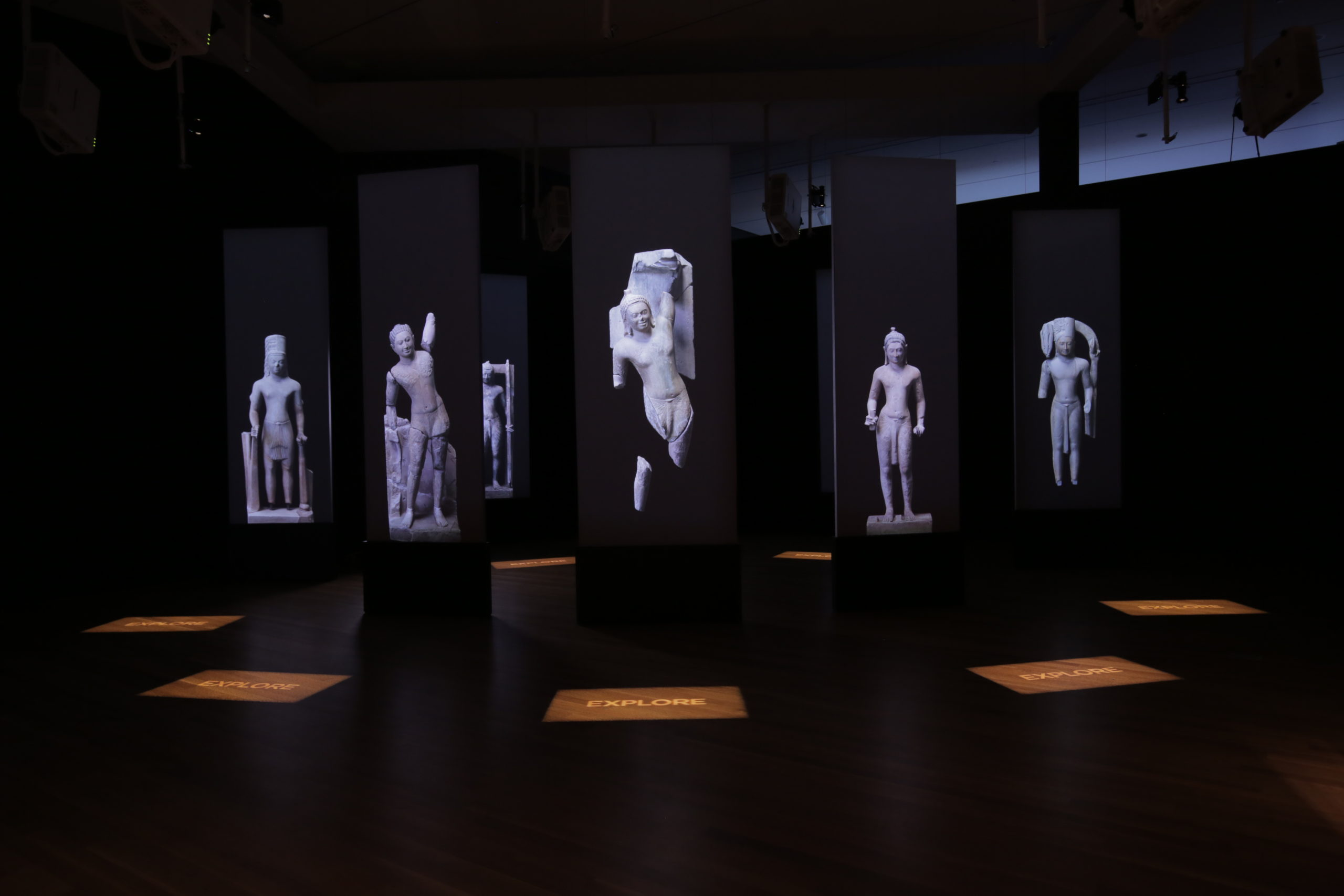
“Traditionally, museums were concerned that digital [exhibitions] would be gimmicky and take away from the credibility of the scholarship,” explained Alexander. “Things like too much video or VR can isolate visitors who, we know, like to share their museum experiences with friends and family. CMA has long sought digital elements that enhance and don’t distract.”
Working with development partner The Interactive Commons at Case Western Reserve University, Alexander and her team came up with four digital concepts for this exhibition, thinking that one or two would make it into the final showing. In the end, they used all of the concepts to round out the complex story with four digital galleries out of six total spaces.
The opening gallery used immersive video projections on three walls and a Cambodian waterways soundscape to create a cinematic experience of the sculpture’s homeland. The next gallery—based on a combination of photogrammetry, LiDAR scanning and 3D models—digitally reunited all eight gods from Phnom Da at life-size scale. And in another, narrated by Angelina Jolie and Loung Ung, archival photographs of the sculptures interfaced with historical images, present-day footage, and animated maps to illustrate the importance of open dialogue and mutual sharing of resources in the preservation of art and cultural heritage.
The mixed reality gallery tour completed the story of Krishna Lifting Mount Govhardan. Visitors could wear HoloLens 2 headsets to see 3D holographic projections overlaid on the gallery and to hear spatial audio as they traveled alongside the Krishna over 15 centuries and three continents. This guided experience was timed to bring new groups of six visitors through the tour every two minutes, allowing for up to 36 visitors at a time.
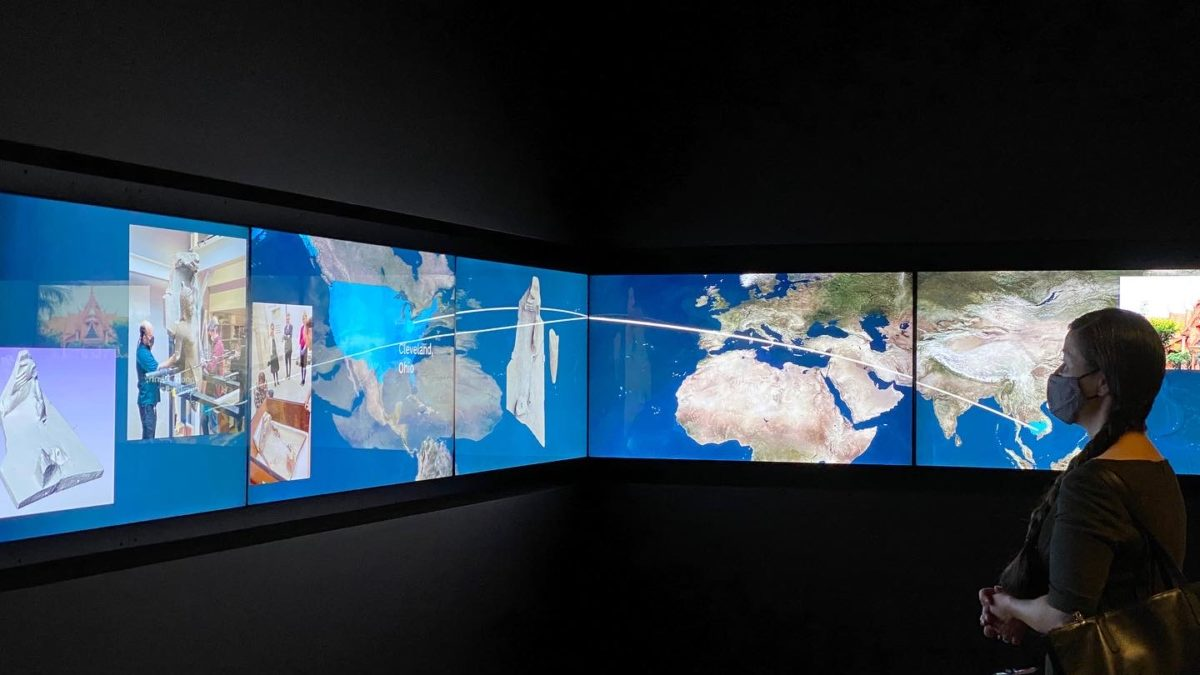
The scale of this project has never been attempted before in a major exhibition type of deployment. This will be the largest museum exhibition in HoloLens in the world.
Visitors would start at the sacred peaks of Phnom Da, exploring a detailed aerial model of the mountain made using drone photogrammetry. The tour then recreates the 1920s interior of the Stoclet House in Brussels, where the Krishna was once on display. The audience witnesses the attempted, but incomplete, reconstructions of the sculpture in the 1940s.
Finally, viewers stepped into Krishna’s original Phnom Da cave temple, where the tour culminates with a life-size holographic re-creation of the sculpture in its original condition, holding up the mountain roof.
Dr. Mark Griswold, faculty director of The Interactive Commons, said, “Here the content, lighting, and visuals all merge with the conventional analog parts of the exhibition. And the scale of this project has never been attempted before in a major exhibition type of deployment. This will be the largest museum exhibition in HoloLens in the world.”
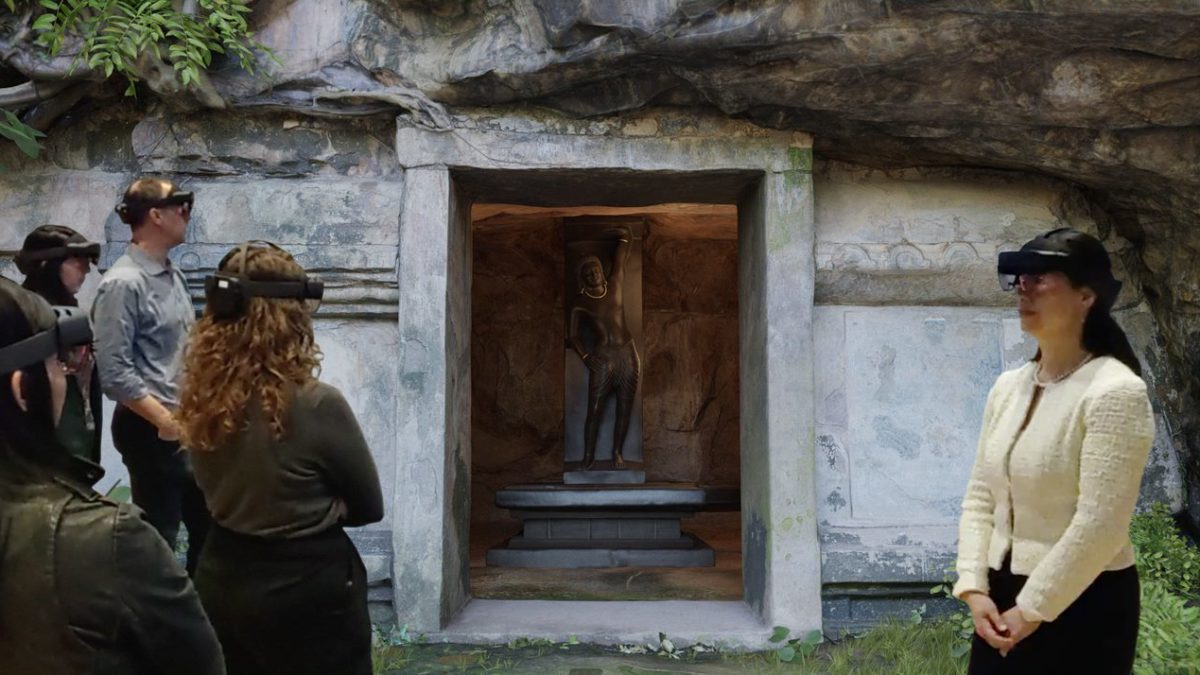
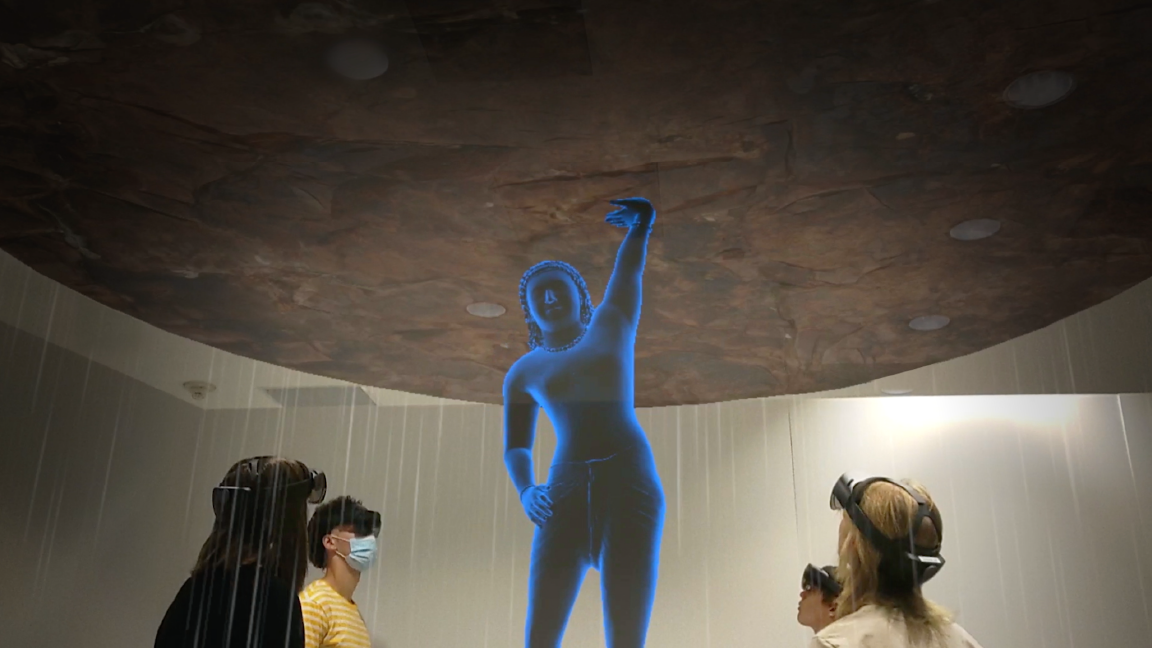
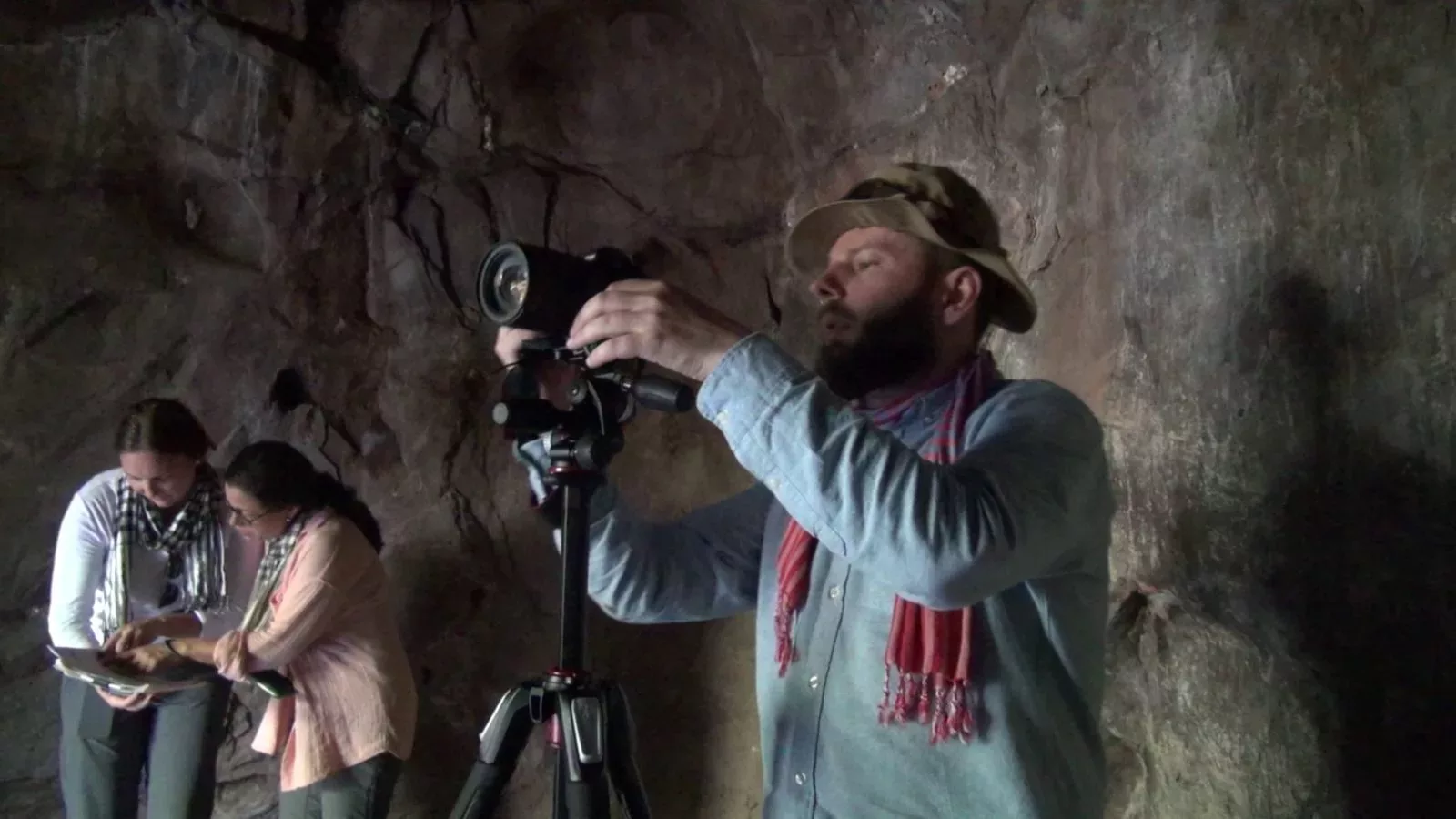
With holograms, visitors can see how the Krishna was once burnished to the point that it shone like it was dipped in glass and adorned with gold jewelry.
“Conservators today would never alter an object to look like it did in its original state,” said Rhie Mace. “But with holograms, visitors can see how the Krishna was once burnished to the point that it shone like it was dipped in glass and adorned with gold jewelry.”
Cambodian-American author and human rights activist Loung Ung said, “The technology allows visitors to see [the sculptures] as they were intended to be viewed by the people who made them and the people who worshipped them. The experience is mystical, stunning and spiritual.”
Alexander is pleased that the experience also showcased all of the history and effort that made possible Revealing Krishna: Journey to Cambodia’s Sacred Mountain. She said, “We want visitors to grasp the magnitude of this discovery and the incredible circumstances that brought this exhibition to fruition.”
Rhie Mace believes that the right use of digital elements can revolutionize the exhibition experience and push the boundaries of what a museum can be in the future. “We found that mixed reality is really the answer to the yearning of curators for a seamless blend between the physical and the digital,” she said. “We’re able to tell the story of Krishna Lifting Mount Govardhan in a way that views don’t just understand rapidly but can understand instantly.
